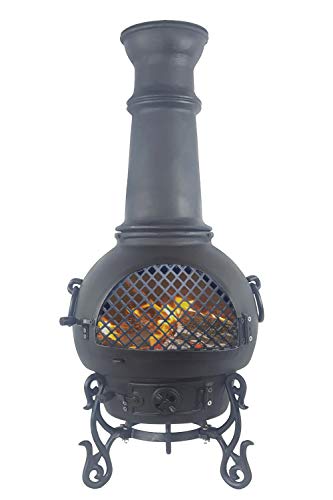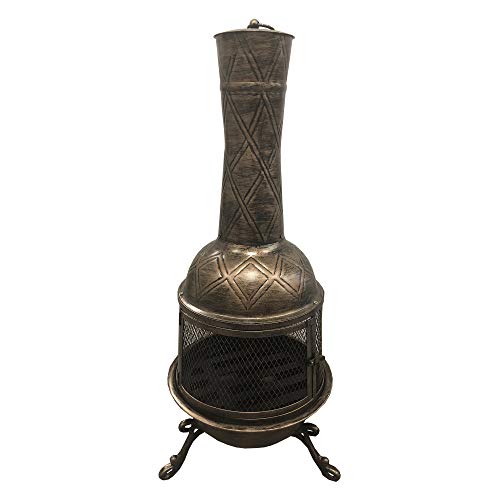Fire Pits & Chimineas Tools To Make Your Everyday Lifethe Only Fire Pi…
페이지 정보
작성자 Antonia Snodgra… 작성일24-11-22 13:12 조회18회 댓글0건관련링크
본문
 Chimineas Vs Fire Pits
Chimineas Vs Fire PitsSimilar to a pot-bellied stove Chimineas have an opening in the front to allow for stacking fuel and a chimney attached that directs smoke up. They are available in a range of materials, including clay or terracotta to give the traditional appearance and iron or cast iron for durability.
 Metal models are more robust and can stand up to higher temperatures. Clay models require additional attention. Both add warmth and ambiance to outdoor spaces.
Metal models are more robust and can stand up to higher temperatures. Clay models require additional attention. Both add warmth and ambiance to outdoor spaces.Chimineas
Chimineas resemble fireplaces in many ways, but they have an attractive appearance and are designed specifically for outdoor use. They are constructed from clay or terracotta and can be decorated with vibrant themes that are influenced by Mexico. Modern chimineas tend to be constructed of materials like cast iron and aluminium, which are more resistant to damage and breaking than Clay Chiminea large.
Originally a potbellied stove the chiminea was created in Mexico and other Western states. They are mostly used to entertain however they can also be a focal point in any outdoor space. The long chimney of a chiminea may emit smoke upwards, while keeping it away from those who are seated near it. This is in contrast to fire pits that often feature an open flame which can release sparks, embers, and other debris on the ground.
Both chimineas, and fire pits, bring warmth to outdoor spaces. However, they are different in terms of maintenance and advantages. The design of the chiminea can be adapted to a variety of garden styles, while the sleek, minimalist design of a fire pit is suitable for many outdoor settings.
The difference in maintenance for chimineas versus fire pits is also largely due to the materials used. Terra clay, terra cotta and cast iron are more vulnerable to being damaged. Consequently, chimineas require more frequent maintenance.
Both kinds of outdoor fireplaces are popular because they provide a warm and inviting place for family and friends to gather for dinners or cocktails. The enclosed and contained design of a chiminea makes it suitable for smaller gatherings and is more efficient in warming the room. Its more pronounced safety benefits are due to the fact that it provides more protection from sparks and embers which could escape from the fire, and fire pits must be carefully placed to minimise this risk and must be constantly monitored.
Fire pits
When planning your outdoor space, you could be faced with the decision to include an outdoor fire pit or chiminea. Both options add warmth and style to a garden or patio but they differ in their design, how they operate, and security features. We'll help find the best option for your space, by comparing initial costs, maintenance, fuel costs and much more. We'll examine the heat output, smoke and safety of both.
A chiminea, or chimenea (pronounced Che-meh-NEH-yah) is a freestanding front-loading fireplace that comes with a chimney and can be used to cook. They can be constructed from clay, metallics like cast iron or steel chiminea, or cement or stone. They are available in various designs, shapes and sizes, providing flexibility to match various outdoor decors. They can be insulated to provide the user with a sense of security and a controlled flame. This decreases the chance of sparks and improves safety.
Although chimineas are compatible with wood and charcoal, it is best to use seasoned or kiln-dried logs. Moisture wood creates more smoke and heats less efficiently. Chimineas also require a larger fire to keep them warm, which could cause a greater amount of smoke, but this can be reduced with the proper air flow, use of a log grate, and regular maintenance.
Fire pits can be constructed out of a variety of materials including steel, which is the most well-known due to its strength and cost-effectiveness. Some fire pits can be moved around while others are permanent fixtures. They are typically built into the ground or placed on a deck that is raised and come in various shapes, sizes and finishes that match an array of outdoor decors. They can be powered by gas, which provides added convenience and control, or by charcoal and wood.
While they can be easier to maintain than chimineas, fire pits are generally considered to be more dangerous than Chimineas. Their open design allows for more sparks to fly around that could cause danger to pets and children. To avoid accidents, they should be kept away from flammable items and under constant supervision. They also generate a lot of smoke and ash which could cause discomfort for some people to sit near.
Safety
Chimineas and fire pits can add warmth and awe to your outdoor space However, using them can be risky. Both are extremely hot, and you should be careful when using them, particularly when you are around children and animals. Both are suitable for surfaces that are prone to cracking under high heat (see below) which is why putting a layer of sand in your chiminea or a stone slab and brick underneath the fire pit is advisable. Both are able to release a significant amount of smoke, which may be an issue if you live in a place that is prone to wind. The chiminea has the benefit of having the fire contained within it, so it is less vulnerable to wind blowing embers and ash around. However, the opening is only one-sided and it is not possible to see the back, so it would be easy to leave a chiminea in a safe place in a windy area.
Make sure you use only seasoned, kiln dried logs for both types of fireplaces. They'll burn more efficiently and produce less smoke. Also, be sure to stay clear of materials that can ignite, like paper, twigs and rubbish that could quickly erupt into flames and trigger an unwelcome or dangerous reaction.
Be aware of any local burn bans that could be in place. They can be caused by unfavourable conditions, which are combined with the high levels of emissions, and can raise levels of fine particle pollution to dangerous levels. Inhaling these harmful toxins could cause respiratory issues.
Keep a bucket of water or garden hose handy in case the fire is out of control. Be sure to keep the area around your fire pit free of any branches or twigs that could catch fire. It is also an excellent idea to keep an emergency kit close to the fire pit in case someone is injured by sparks or smoke. Both a chiminea or a firepit will last for many years provided they are maintained properly. Cast iron chimineas are the most durable option for your patio than terracotta or clay which are more fragile and may crack at high temperatures.
Maintenance
If you do not properly maintain your chiminea or fire pit, in your backyard, it could cause serious dangers. It could cause serious damage or injuries if improperly used or is placed too close to a house, shrubbery, or other structures. It is also crucial to ensure that only natural materials such as wood are burned and that plastics, trash or liquid fuels aren't utilized. You should also be aware of the weather forecasts for your area to ensure you are following the rules that govern when you are allowed to burn. In case of an emergency, it's a good idea keep a fire extinguisher and hose at hand.
Chimineas are a classic outdoor fireplace that provides warmth and ambiance to gardens and patios. Chimineas come in a range of designs and styles. They are made from clay or metal, or cast iron. Many chimineas have intricate traditional designs that give a a rustic feel to the outdoor environment. Chimineas also generate less smoke and particles than fire pits, making them greener.
To keep your chiminea in good condition, you should regularly clean it. Begin by removing any ash or unburnt wood from the inside of the grate. Next, make small fires with tiny bits of kindling wood. Allow it to burn for around an hour then carefully dowse the flames with water until they are extinguished them completely. Allow the chiminea's temperature drop before lighting another fire pit with chiminea.
Chimineas can be a beautiful addition to your outdoor space, however they require more maintenance than fire Pits & chimineas pits. To prevent rust or other damage from the elements, they need to be cleaned regularly. Chimineas are also quite fragile, and can break or crack if they are not handled with proper care.
In the end, the decision to choose a fire pit or chiminea is based on personal preference and budget considerations. Both have advantages, but it's important to compare the cost of the initial investment and the long-term costs before deciding which is the best fit for your home. If you are looking for something that will last longer for your home, you should consider the possibility of a custom-built chiminea or fire pit made of durable materials such as stone or steel that are able to endure harsh weather conditions and more frequent use.
댓글목록
등록된 댓글이 없습니다.


